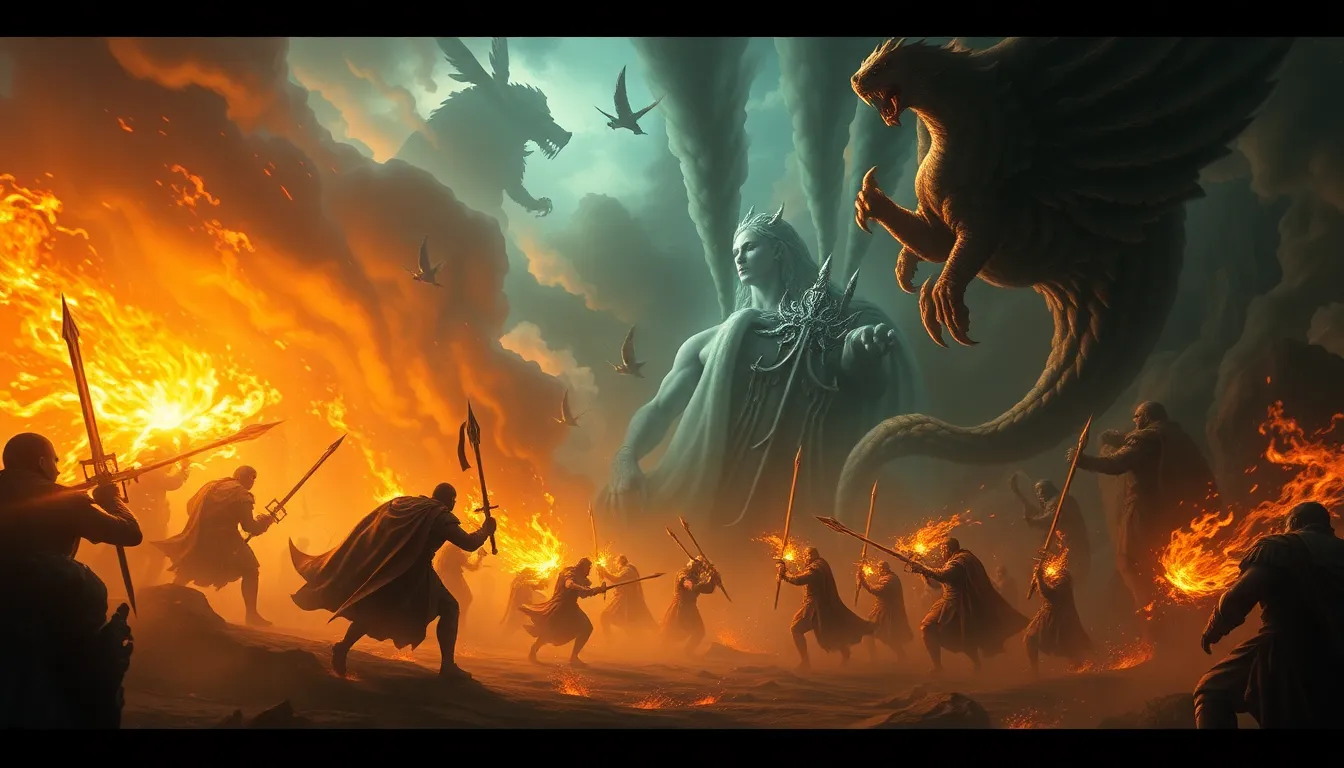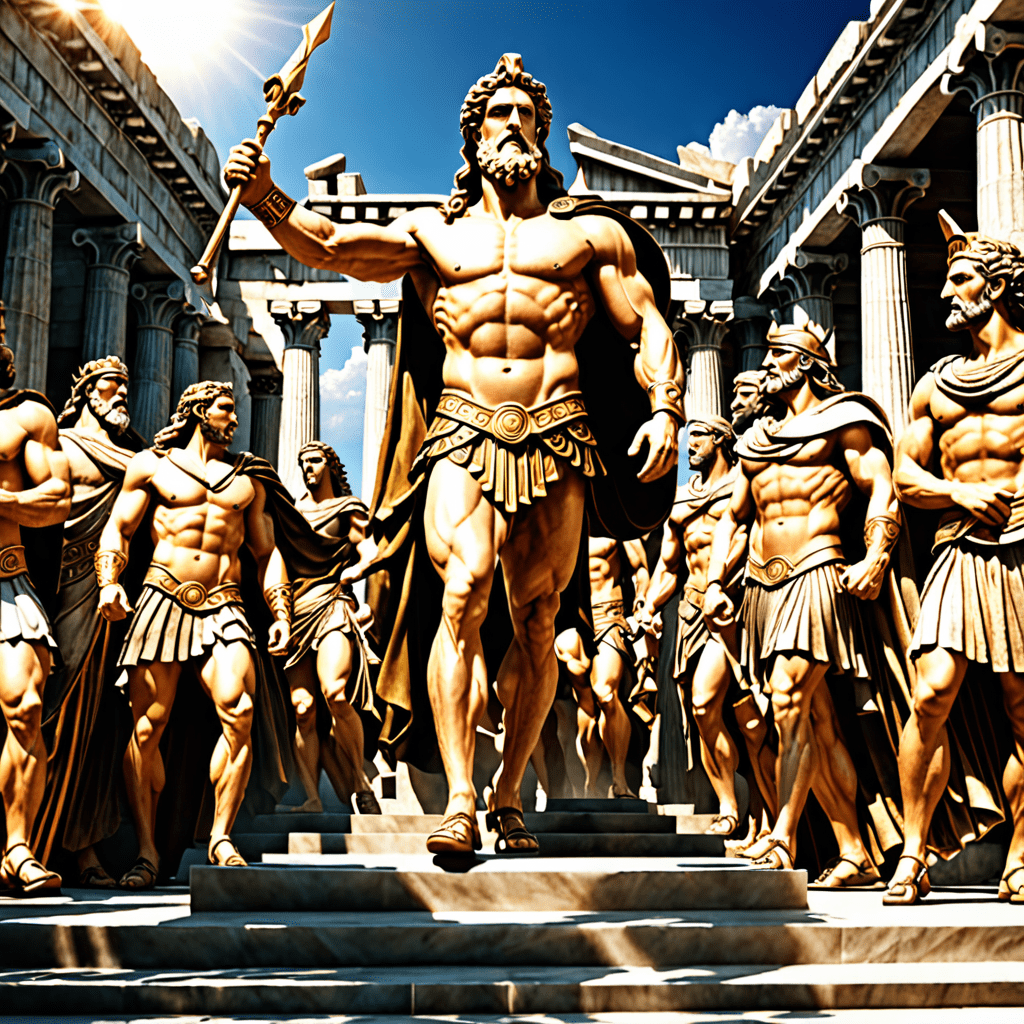The Myth of the Mountain Guardian: Protectors of Sacred Heights
I. Introduction
The myth of the mountain guardian is a captivating narrative that transcends cultures and epochs. These guardians, often depicted as powerful and benevolent beings, are believed to protect sacred heights and the natural world. Mountains, revered as majestic and spiritual entities, play a crucial role in various cultures, symbolizing strength, endurance, and the divine.
This article aims to explore the historical context of mountain worship, the concept of guardianship in mythology, regional variations of the mountain guardian myth, modern interpretations, psychological significance, environmental concerns, critiques, and the future of this enduring myth.
II. Historical Context of Mountain Worship
From ancient civilizations to contemporary societies, mountains have held a special place in human spirituality and culture.
A. Ancient civilizations and their reverence for mountains
Numerous ancient civilizations revered mountains as sacred spaces. The Egyptians associated the mountains with the gods, while the Greeks believed that Mount Olympus was the home of their pantheon. In many cultures, mountains were seen as the link between the earth and the heavens.
B. The role of mountains in religious rituals and beliefs
Mountains often served as sites for rituals, sacrifices, and pilgrimages. People believed that these elevations were closer to the divine, making them ideal locations for connecting with gods and spirits.
C. Notable mountain deities across different cultures
- Mount Fuji: In Japan, it is considered sacred and is personified as a goddess.
- Himalayan Deities: Various deities are associated with the Himalayas, including Lord Shiva.
- Andean Apus: In Incan culture, mountains are personified as powerful spirits known as Apus.
III. The Concept of Guardianship in Mythology
The concept of guardianship in mythology often reflects humanity’s desire for protection and guidance, especially in the face of nature’s might.
A. Definition of guardianship in mythological contexts
Guardianship in mythological contexts refers to the role played by deities or spirits who protect specific locations, creatures, or people. They serve as custodians of the natural order.
B. Common traits of mountain guardians
- Powerful and imposing figures
- Connection to nature and the elements
- Embodiment of wisdom and knowledge
- Representations of strength and resilience
C. The symbolism of protection and watchfulness
Mountain guardians symbolize eternal vigilance and protection. They are seen as watchful eyes over the land, ensuring harmony between nature and humanity.
IV. Regional Variations of the Mountain Guardian Myth
The myth of mountain guardians varies significantly across different regions, influenced by local culture and geography.
A. The Himalayas: The Legend of the Yeti
In the Himalayas, the Yeti, often described as a mysterious and elusive creature, is considered a guardian of the mountain. Many believe that the Yeti protects the sanctity of the mountains from those who seek to exploit their resources.
B. The Andes: The Apus and their significance
In Andean cultures, Apus are mountain spirits that embody the essence of the mountains. They are honored in rituals, and offerings are made to ensure their favor and protection over the land.
C. North America: The Great Spirit and mountain protectors in Native American folklore
Many Native American tribes view mountains as sacred and inhabited by spirits. The Great Spirit is often considered the ultimate guardian, watching over the natural world and guiding humanity.
V. Modern Interpretations of the Mountain Guardian Myth
The mountain guardian myth has adapted to contemporary contexts, influencing various aspects of modern culture.
A. Influence of mountain guardians in contemporary literature and media
Modern literature, films, and art often draw inspiration from mountain guardian myths, portraying them as protectors or as symbols of human struggle against nature.
B. The impact of environmentalism on the perception of mountain guardians
As environmental concerns rise, mountain guardians are increasingly seen as symbols of conservation, urging society to respect and protect these vital ecosystems.
C. The role of mountain guardians in tourism and cultural heritage
Mountain guardians have become integral to tourism in many regions, with local cultures promoting these myths to attract visitors and preserve their heritage.
VI. Psychological and Cultural Significance of the Myth
The myth of mountain guardians serves several psychological and cultural functions.
A. The human need for protectors in nature
Humans often seek reassurance and protection from the unknown, and mountain guardians fulfill this role by embodying strength and vigilance.
B. The myth as a means of coping with the unknown
In facing natural disasters or the vastness of the wilderness, the concept of guardians provides comfort and a sense of order in chaotic environments.
C. The mountain guardian as a reflection of societal values and fears
These myths reflect societal values, fears, and aspirations, showcasing humanity’s relationship with nature and the need for guardianship in a complex world.
VII. Environmental Concerns and the Role of the Mountain Guardian
As modern challenges arise, the role of mountain guardians becomes more critical in the context of environmental conservation.
A. How modern challenges (climate change, deforestation) affect mountains
Climate change and deforestation pose threats to mountain ecosystems, impacting biodiversity and traditional cultures that depend on these environments.
B. The guardian myth as a call to action for conservation efforts
The mountain guardian myth inspires people to take action for conservation, urging them to respect and protect these vital natural resources.
C. Case studies of mountain conservation inspired by mythology
- The Sacred Valley in Peru: Community efforts to protect the Apus and their significance.
- Himalayan Conservation Initiatives: Programs that incorporate local beliefs about the Yeti into conservation practices.
VIII. Critique of the Myth: Debunking Stereotypes
While the mountain guardian myth is rich and meaningful, it is important to approach it critically.
A. The danger of romanticizing mountain guardians
Romanticizing these figures can lead to misinterpretations and oversimplifications of complex cultural beliefs.
B. Addressing cultural appropriation in the interpretation of these myths
It is essential to respect the origins of these myths and avoid cultural appropriation, which can distort their meanings and significance.
C. The importance of respecting indigenous narratives and practices
Engaging with indigenous narratives is crucial for understanding the depth and history of mountain guardian myths, ensuring their voices are heard and honored.
IX. The Future of the Mountain Guardian Myth
The mountain guardian myth is not static; it evolves with society and technology.
A. Evolution of the myth in the face of globalization
Globalization influences how these myths are perceived and shared, leading to new interpretations while risking dilution of original meanings.
B. How new technologies are reshaping our understanding of mountains
Advanced technologies, such as satellite imagery and virtual reality, offer new ways to explore mountains, potentially altering how we engage with these sacred spaces.
C. Preserving the essence of the mountain guardian in modern society
While adapting to modern contexts, it is crucial to maintain the essence of mountain guardians, ensuring their cultural significance is preserved for future generations.
X. Conclusion
The myth of mountain guardians remains a powerful narrative that reflects humanity’s relationship with nature and the need for protection. These figures have shaped cultural beliefs, influenced environmental conservation efforts, and provided psychological comfort throughout history. As we move forward, it is essential to honor these myths, respect their origins, and continue to engage with the natural world in meaningful ways.



